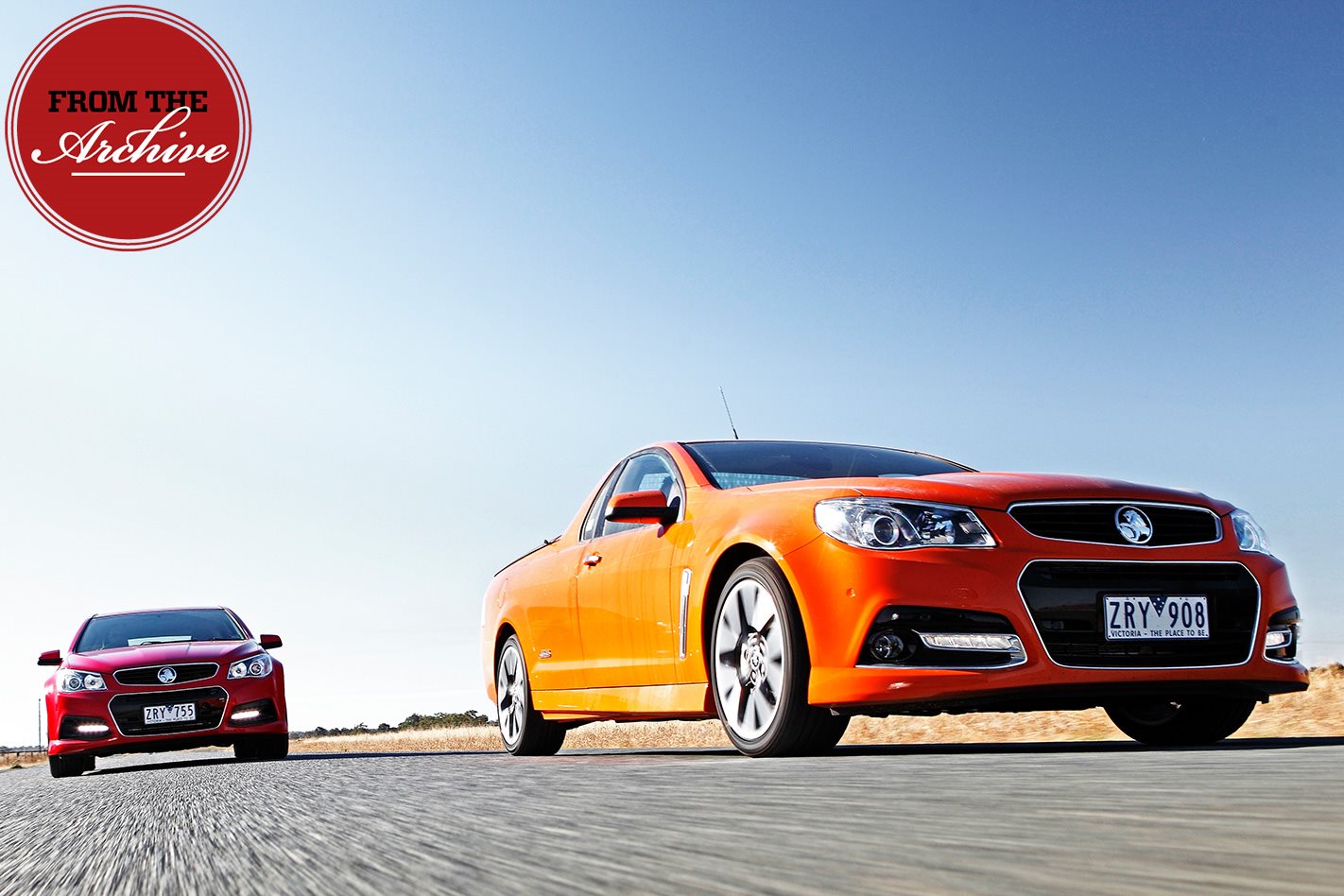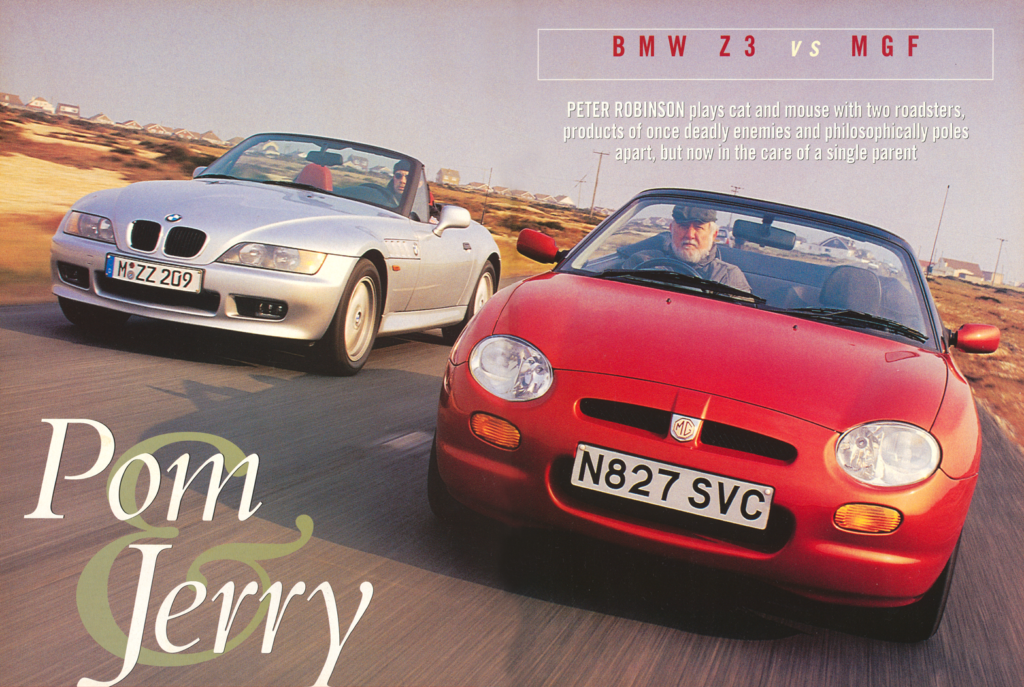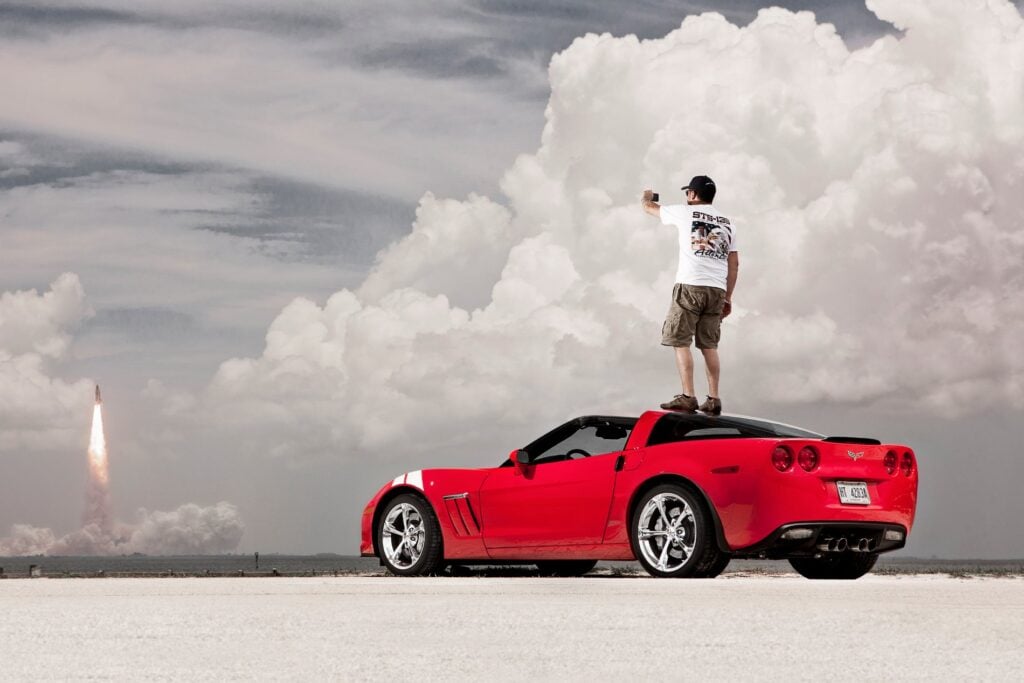First published in the July 2013 issue of Wheels magazine, Australia’s best car mag since 1953.
Three cars, three days, 1500 kays. We know VF is good, but what’s it like in the harsh light of the real world?
LONG, long time ago, people aspired to own a Holden. My great uncle Bill, bless his long-departed soul, almost bought a Humber Hawk because the wait for a brand-new Holden FX was so long. He eventually secured a black, second-hand 1950 model, at a time when Holdens were part of the fabric of society. And of our family.
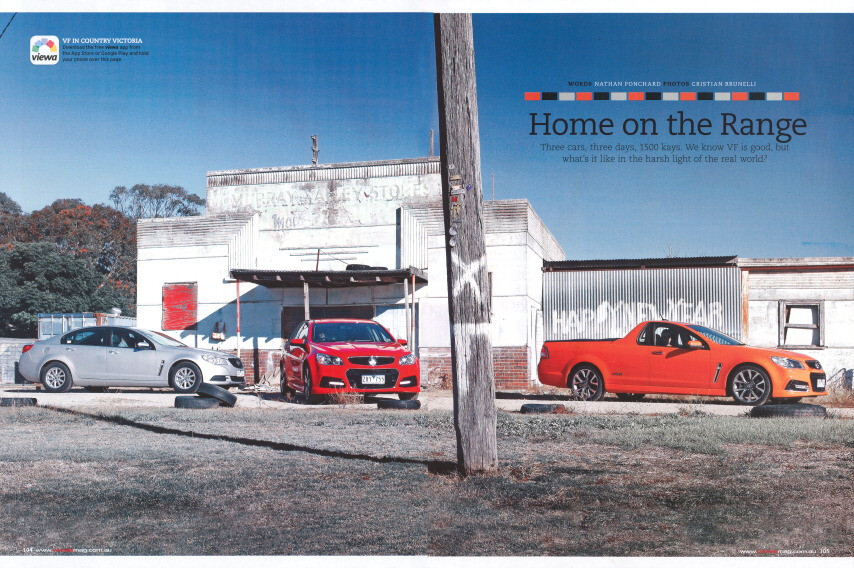 Home on the Range – July 2013
Home on the Range – July 2013
View this article in its original format in the archive.
Bill owned nothing but Holdens his entire life, and even then, he didn’t own many – the ’50 FX, a ’56 FJ Special, a ’71 LC Torana two-door and, finally, a ’75 HJ Kingswood sedan. Cars he could work on and service himself. Cars that fringed my childhood. Cars I can still smell.
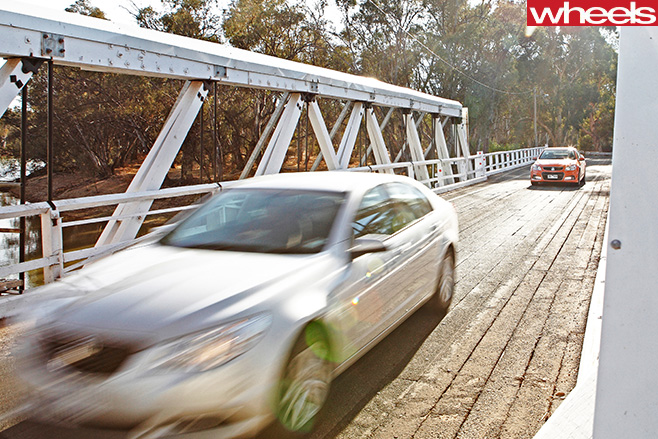
Pulling into the carpark of Holden’s HQ in Salmon Street, Port Melbourne, a month before VF goes on sale, it’s hard not to feel a little excited. We’re here to pick up an Evoke sedan, an SV6 Sportwagon and an SS-V Ute for another big Wheels drive. For anyone who’s been brought up on Aussie car mags, taking the latest home-grown model for a lap around, well, something, is always a great moment in time. But for how much longer…?
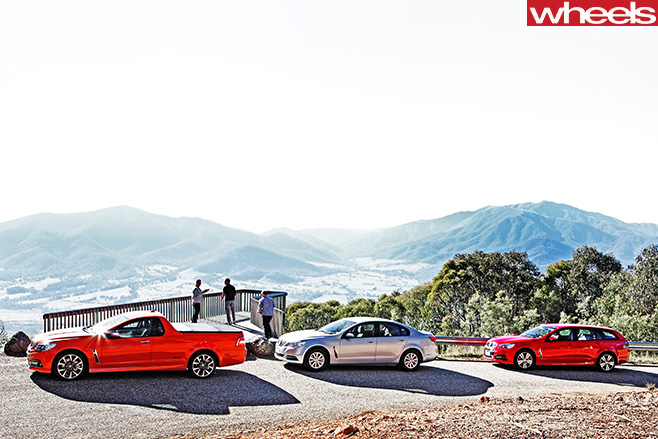
Well, that was the plan. Just down the road from Salmon Street, we park alongside the Yarra for a ‘Melbourne’ shot, and are instantly surrounded by a bunch of folk wanting to check out the VF. The SS-V’s striking new orange hue called Fantale is what draws everyone in first. They like the new front, love the Ute’s colour, and think its 19-inch wheels are beaut, but what’s that? “I think you’ve got a nail in your front tyre mate.” Sure enough, there’s a whacking great piece of metal embedded into the SS-V’s front-left tyre. Luckily, Holden’s two kilometres away. Worryingly, the silver Holden Commodore Evoke – the only VF sedan we have in our fleet – is virtually ignored.
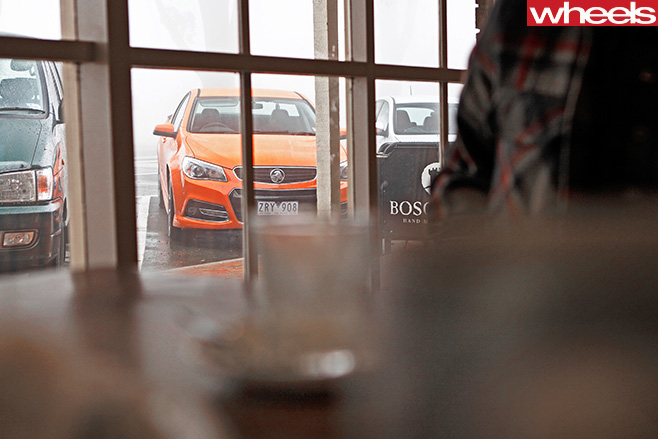
I’m in the manual Holden Commodore SS-V Ute and it’s brushing off the conditions like Ruddy does suggestions of another leadership challenge. But regular Wheels contributor, Byron Mathioudakis, is behind me in the Evoke and he’s doing it tough. It’s those Bridgestone Ecopias – chosen because of their exceptionally low rolling-resistance, not their wet-weather grip. Admittedly, Byron’s stoking the Evoke along, but the car is sliding all over the place. Only the excellence of Holden’s ESC system keeps it pointing steadfastly in the right direction. In the meantime, the SS-V is rock solid, as is the SV6 wagon – both wearing Bridgestone Potenza RE050As. If I was buying an Evoke, first thing I’d do is dump the stock wheel/tyre package and order the optional 18s with the same-type rubber as the Calais (Bridgestone Turanza T001) in a 235/50R18 size. Better looks and grip.
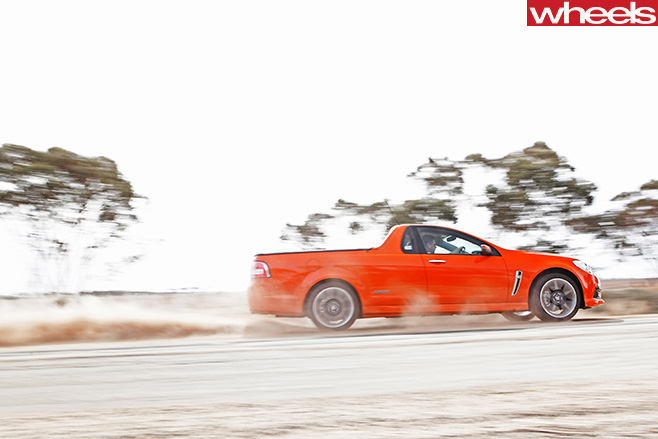
The SS-V, however, is … beautiful. Its leather and mock-suede upholstery is super-modern, yet classy, and I personally love the stitched fabric on the dash. The seats themselves are superb, but in Holden’s switch to global switchgear – the indicator stalks, window buttons, and most controls are shared with other GM products – seat adjustment has taken a backwards step.
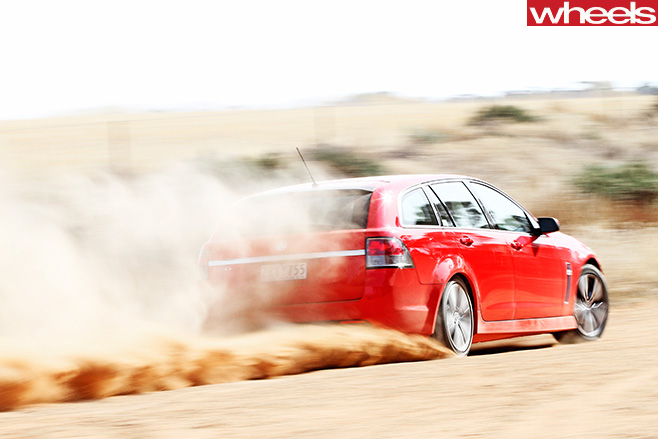
That aside, this SS-V manual Ute is bloody excellent. The keenness of its steering blends seamlessly with its chassis, making it feel much smaller than it actually is. Yet the thing that stands out most is that you forget you’re driving a Ute. Its ride is level, absorbent and brilliantly controlled, especially considering its sporting focus and 19-inch wheels, and its new-found refinement is remarkable. Even the carry-over 6.0-litre V8 has a crisper, more cultured induction growl, and anyone who complains that the six-speed manual is heavy and truck-like is a massive whinger, with a capital ‘W’.
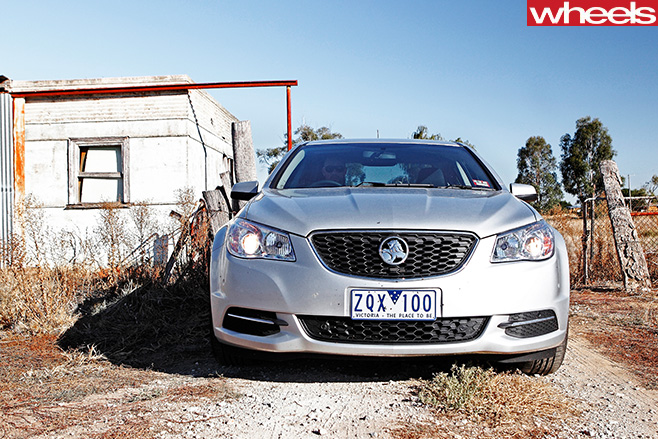
With Mt Hotham having been re-routed out of our schedule, Day Two starts with a back-track towards Victoria’s high country. Half way there, we discover the road is closed due to tree-felling and won’t re-open until 4pm… So we turn around and head to Mt Beauty on the incredible Tawonga Gap Road instead.
Being the last really twisty and hilly piece of tar we’ll see for the rest of the trip, we go for it. I start in the SS-V Ute, stability control activated due to potential ice, and marvel at the almost subliminal delicacy of its ESC system, and its inherent poise. Refinement and reward … in a Ute. Only Australia could produce a two-door sports car with a 2064-litre boot.
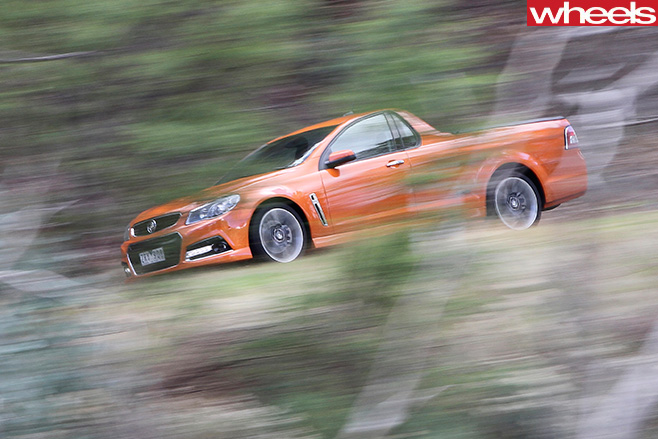
Stability control off, the SV6’s true dynamic nature is exposed. The electronics err towards slight understeer to keep mums and dads safe, but switch it off and you can throw 1776kg of SV6 Sportwagon around like few would believe. Its turn-in, body control, and throttle adjustability all demonstrate how good VF is as a driver’s car. Back in 2006, the volume-selling SV6 was the worst VE. Now it’s arguably the best VF.
Even the softer Evoke is fun on the Tawonga Gap Road, and while it mightn’t be as quick, or as grippy, as the FE2-suspended pair, its 3.0-litre V6 is sweeter than the punchier 3.6, and its keen, yet supple chassis is willing to give you everything it has. All that’s holding it back is those grip-shy Ecopia tyres.
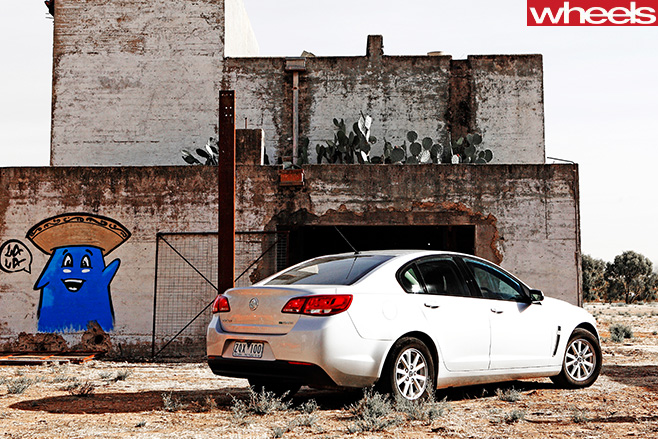
No Wheels drive worth its salt is complete without an obligatory dirt section, so we begin the final day looking for anything unsealed. The answer lies just outside of Lake Boga – 16km south-east of Swan Hill.
Ah, Lake Boga – all it’s missing is an ‘N’. And, for the last 10 years, a lake. On the edge of town, we find an abandoned motel – Catalina – which closed when the lake dried up and no one wanted to stay. But in the 1950s, this motel was probably all that most people needed. Double-bed and bunk-bed rooms. A bar and open-plan dining, eerily with old champagne glasses still sitting on the shelves. And the lake right out front.
I can’t help thinking about the irony of all this. Today’s VF Commodore is all that most people need, too. But with so much choice, do they still want it?
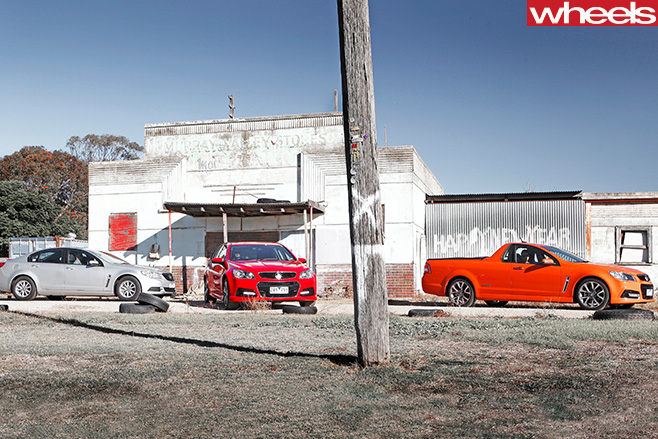
Thinking about the VF on the final leg into Melbourne, it’s hard not to be impressed. The harder you drive it, the better it gets. The only fault I can find in the electric power steering is a moment of stickiness with about 20 degrees of lock on through a constant-radius corner. Even then, it’s only noticeable in the Evoke and SV6, not the V8 SS-V, but that’s hardly a deal-breaker. One tiny flaw in an otherwise accomplished package.
Indeed, the Aussie car has never been better than VF – not by a long shot. The more time you spend in any new Commodore, the greater your affection for it. But is the Australian public willing to accept this modern twist on what was once a traditional favourite? Will people view the VF like they would having wi-fi and a flat-screen in a 1950s motel? Only time will tell…
Techno for jam
The vast leap in connectivity applies across the VF range, but only the SS-V on this test featured the techno works burger. Its trick, full-colour instrument display looks the biz, but we discovered one gaping flaw in the standard sat-nav. When we were looking for the town of ‘Charlton’, it found three of them, without assigning states. We touched the first one, assuming it knew we were in Victoria, but it started directing us to Charlton in NSW, 900km away. It needs a software fix.
Does she like a drink?
Holden’s focus on real-world driveability, not just a great fuel number on the windscreen sticker, has made VF much more pleasant to drive. Yet economy hasn’t suffered. Over 1500km, the hard-driven Evoke averaged 9.9L/100km, the fully-loaded SV6 wagon used 10.6L/100km and the manual SS-V Ute drank 12.2L/100km. None of the cars were driven for economy, but Evoke was the only car performance tested. We clocked 0-60km/h in 3.9sec, 0-100km/h in 8.1, 0-160km/h in 19.1 and the standing 400m in 15.9sec at 144.95km/h.

